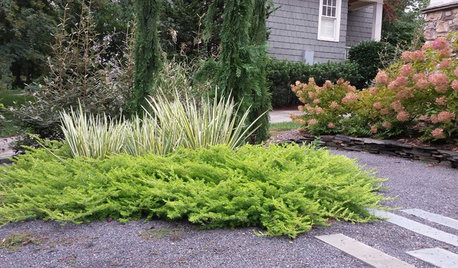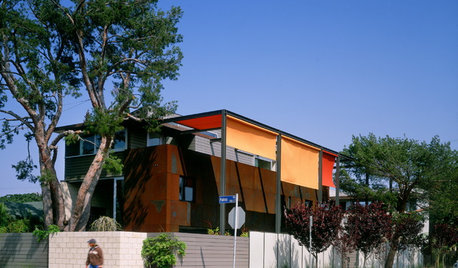Pine & Juniper Bonsai Q's
Joe1980
13 years ago
Related Stories

ARTThe Beauty of Bonsai — Living Art, Rooted in Harmony
Create your own emblem of nature's balance with an art form dating back 1,000 years
Full Story
PLANTING IDEASThese Aren’t Your Grandparents’ Junipers
Dislike junipers? Maybe it’s time to discover new varieties and new uses for this garden workhorse
Full Story
WOODKnotty and Nice: Highly Textured Wood Has a Modern Revival
Whether it's cedar, fir or pine, if a wood has a knot, it's hot
Full Story
GARDENING GUIDESNew Ways to Think About All That Mulch in the Garden
Before you go making a mountain out of a mulch hill, learn the facts about what your plants and soil really want
Full Story
REMODELING GUIDESInteresting Industrial Materials: Cor-Ten Steel
Use the Rust-Rich Metal for a Variety of Exterior Applications
Full Story
SIDE YARD IDEASNarrow Trees for Tight Garden Spaces
Boost interest in a side yard or another space-challenged area with the fragrance and color of these columnar trees
Full Story
GARDENING GUIDES5 Best-Behaved Trees to Grace a Patio
Big enough for shade but small enough for easy care, these amiable trees mind their manners in a modest outdoor space
Full Story
BEFORE AND AFTERSSee 6 Yards Transformed by Losing Their Lawns
Wondering whether a turf lawn is the best use of your outdoor space? These homeowners did, and they found creative alternatives
Full Story
LIFEHow Your Landscaping Can Keep Burglars Away
Prevent home break-ins with strategic landscaping and good practices instead of menacing — and maybe less effective — measures
Full Story
GARDENING FOR BIRDSWild Birds Transform a Woman’s Garden and Life
How Sharon Sorenson created a wildlife haven and became the Bird Lady of Southern Indiana
Full Story







tapla (mid-Michigan, USDA z5b-6a)
Joe1980Original Author
Related Professionals
Danbury Landscape Architects & Landscape Designers · Kapaa Landscape Architects & Landscape Designers · Kyle Landscape Architects & Landscape Designers · Salem Landscape Architects & Landscape Designers · Bethlehem Landscape Contractors · Davis Landscape Contractors · Elkridge Landscape Contractors · Fort Payne Landscape Contractors · Hayden Landscape Contractors · Kettering Landscape Contractors · Diamond Bar Decks, Patios & Outdoor Enclosures · Lebanon Decks, Patios & Outdoor Enclosures · Midlothian Decks, Patios & Outdoor Enclosures · Palm Beach Gardens Decks, Patios & Outdoor Enclosures · Parlier Decks, Patios & Outdoor Enclosurestapla (mid-Michigan, USDA z5b-6a)
Joe1980Original Author
tapla (mid-Michigan, USDA z5b-6a)
Joe1980Original Author